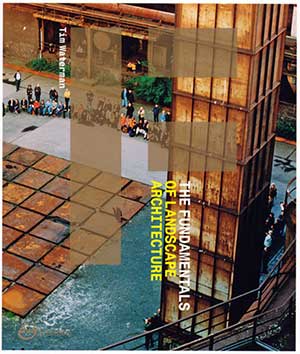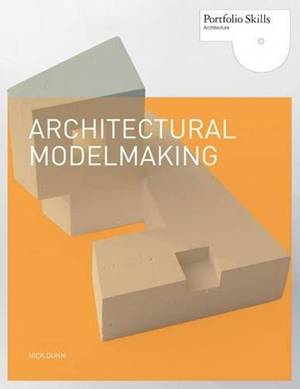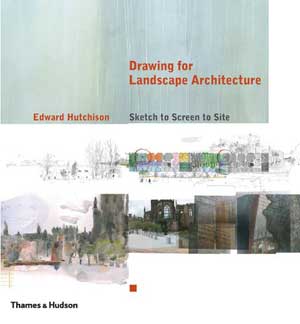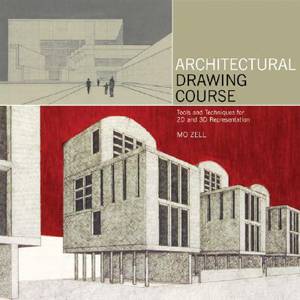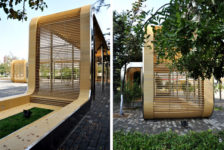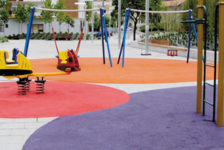Top graduate Joe Clancy shares his top book recommendations for your first year of landscape architecture. Here is a list of 10 books that helped me through my Landscape Architecture studies. While I did not read all of these choices in my 1st year, as I had not discovered them yet, in retrospect I feel they are appropriate for helping students get through their first year. All books link to Amazon however, shop around, as they aren’t cheap. Of course, check your University’s library first. Keep an eye out for my follow up articles on book lists for 2nd, 3rd and 4th year. Note: Everyone will have their favourites and this list is only a small portion of the material out there. There are “must reads” and “classics” and so on, but I feel the choices below are, currently, the most relevant and current. 10. Fundamentals of Landscape Architecture (Tim Waterman)
“The Fundamentals of Landscape Architecture” provides an introduction to the key elements of this broad field. It serves as a guide to the many specialisations complimentary to landscape architecture, such as landscape management and planning, and urban design. This book explains the process of designing for sites, including historical precedent, evolving philosophies, and how a project moves from concept to design to realization. Read our full review of the Fundamentals of Landscape Architecture. Get it Here! 9. Destination Art (Amy Dempsey) “Destination Art” remains the only illustrated guide to modern and contemporary art sites outside the confines of museums and galleries. Revised and updated in paperback, the book profiles more than 200 of the most important contemporary art sites around the world, including four new sites in Tennessee, Norway, China and Scotland. From massive land and environmental works to extensive sculpture parks, some of the most crucial and popular international artists are profiled, from Henri Matisse, Anoni Gaudi and Constantin Brancusi to James Turrell, Antony Gormley and Olafur Eliasson. Get it Here! 8. Architectural Model Making (Nick Dunn) The physical scale model is often cited as an important tool of communication for architecture students and practitioners alike. Through description of the use of different models in different contexts, this book provides a guide to how and why models are used, what they are used for, and, furthermore, how they relate to architecture education. Get it Here! 7. Landscape Graphics (Grant W. Reid) “Landscape Graphics” is the architect’s ultimate guide to all the basic graphics techniques used in landscape design and landscape architecture. Progressing from the basics into more sophisticated techniques, this guide offers clear instruction on graphic language and the design process, the basics of drafting, lettering, freehand drawing and conceptual diagramming, perspective drawing, section elevations and more. It also features carefully sequenced exercises, a complete file of graphic symbols for sections and perspectives, and a handy appendix of conversions and equivalents. Get it Here! 6. Theory in Landscape Architecture (Simon Swaffield) Here, for students and practitioners of landscape architecture, architecture, and planning, is a single resource for seminal theoretical texts in the field. Essential for understanding the specific connections that have been made between landscape and social, cultural, and political structures, “Theory in Landscape Architecture” reminds readers that the discipline of landscape architecture can be both practical and formally challenging. Covering the past fifty years of theory, this primer makes an important contribution to a student’s emerging professional ethics. Get it Here! 5. Drawing for Urban Design (Lorraine Farrelly) Explores a range of ways to represent the city, from freehand sketching to the sophisticated interactive computer model of the city of the future. This book provides an introduction to the techniques while explaining the processes associated with describing and designing urban environments. Get it Here! 4. Form and Fabric in Landscape Architecture (Catherine Dee) Form and Fabric in Landscape Architecture provides an original, visual approach to the study of landscape architecture by creating a spatial morphology based on use and experience of landscapes. It explores aesthetic, spatial and experiential concepts by providing a structure through which landscapes can be understood and conceived in design. ‘Fabric’ is the integrated structure of whole landscapes, while ‘form’ refers to the components that make up this fabric. Together form and fabric create a morphology of landscape useful for the development of visual-spatial design thinking and awareness. This book is intended as both an introduction to the discipline for students of landscape architecture, architecture and planning, and a source of continuing interest for more experienced environmental designers. Get it Here! 3. Drawing for Landscape Architecture Sketch to Screen to Site (Edward Hutchison) This essential publication reintroduces the importance of learning to see by hand, to visualize large-scale design schemes and explain them through drawing, before using the digital tools that are so crucial to efficient and cost-effective building solutions. Combining traditional drawing techniques with those from CAD rendering, in nine chapters, “Drawing for Landscape Architecture” guides practitioners from their very first impression of a site, through concept and schematic design and client presentation to construction and site drawings, concluding with two case studies that show the final result. Just as hand-drawing returns to design courses around the world, this welcome publication celebrates the best aspects of traditional techniques while incorporating them into today’s digital design methods. Read our full review of Drawing for Landscape Architecture Get it Here! 2. The Architectural Drawing Course (Mo Zell) This practical foundation course in architectural design offers key advice on the principles, practice and techniques of the subject. Dealing with much more than just the technical aspects of drawing, it introduces the reader to the visual language of architecture, encouraging them to think spatially and question the built environment. All architecture students, and anyone interested in the creative side of architecture, will find this book an invaluable tool and reference. Get it Here! 1. The Planting Design Handbook (Nick Robinson) Nick Robinson’s “The Planting Design Handbook” has been widely used as a definitive text on landscape architecture courses throughout the world. It examines the horticultural, ecological and aesthetic characteristics of plants, discusses the structural and decorative roles of planting, spatial composition, species selection, planting plans and spacing, and the vital role of management. With its fresh look at aesthetic principles and its analysis of the design process, it reveals how a systematic approach can allow the greatest freedom for the creative imagination. While expensive, this book is worth it. I still refer to it in professional practice Get it Here! We hope you benefited from this list, there is some real gems on this here which you are sure to benefit from, so check to see if your library has them, if not, click on the link and pick up your own private copy and grow your library as you grow your career and interest in the world of landscape architecture. Watch out for the next edition of Joe’s recommendations for 2nd year. Article written by Joe Clancy HOME PAGE Featured image Peter Werkman via Flickr CC 2.0 Published in BlogLogin
Lost Password
Register
If this is your first time on the new site, please click "Forgot your password?". Follow the steps to reset your password. It may be the same as your old one.



